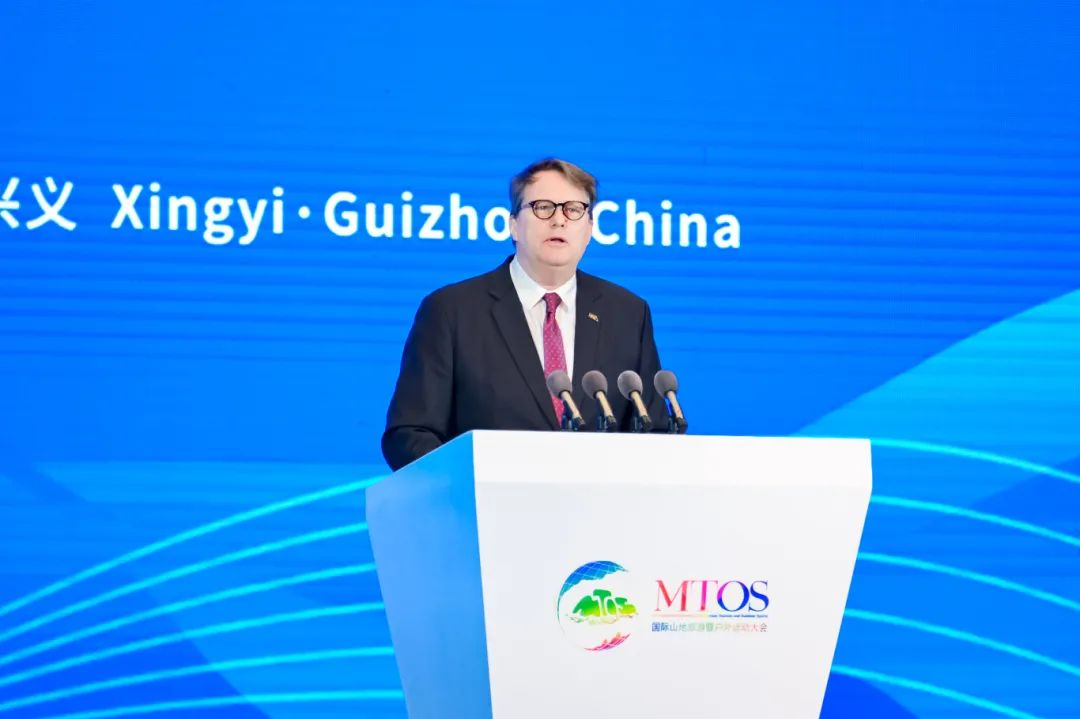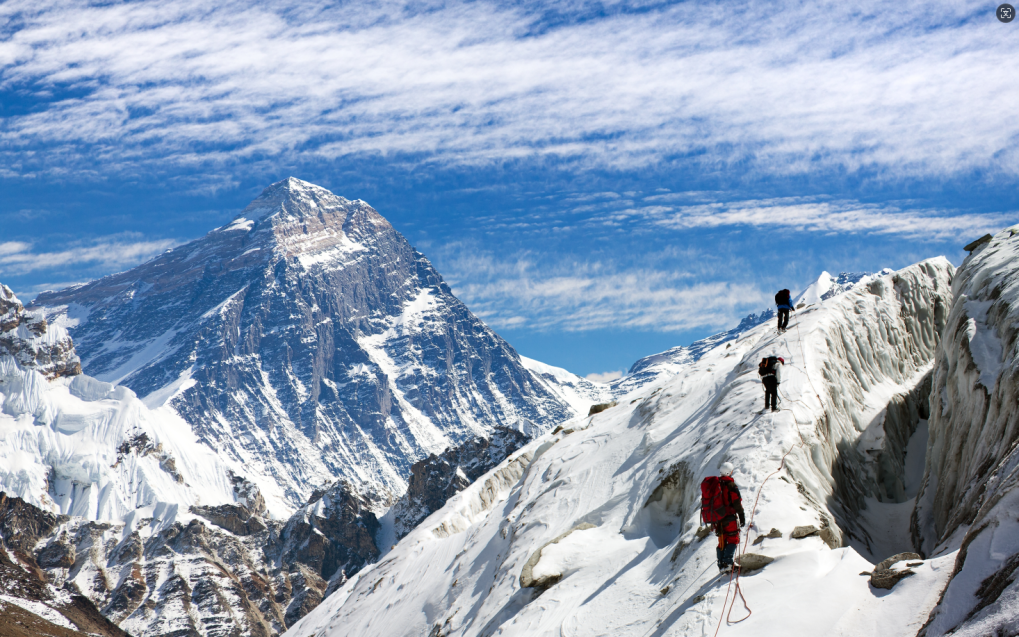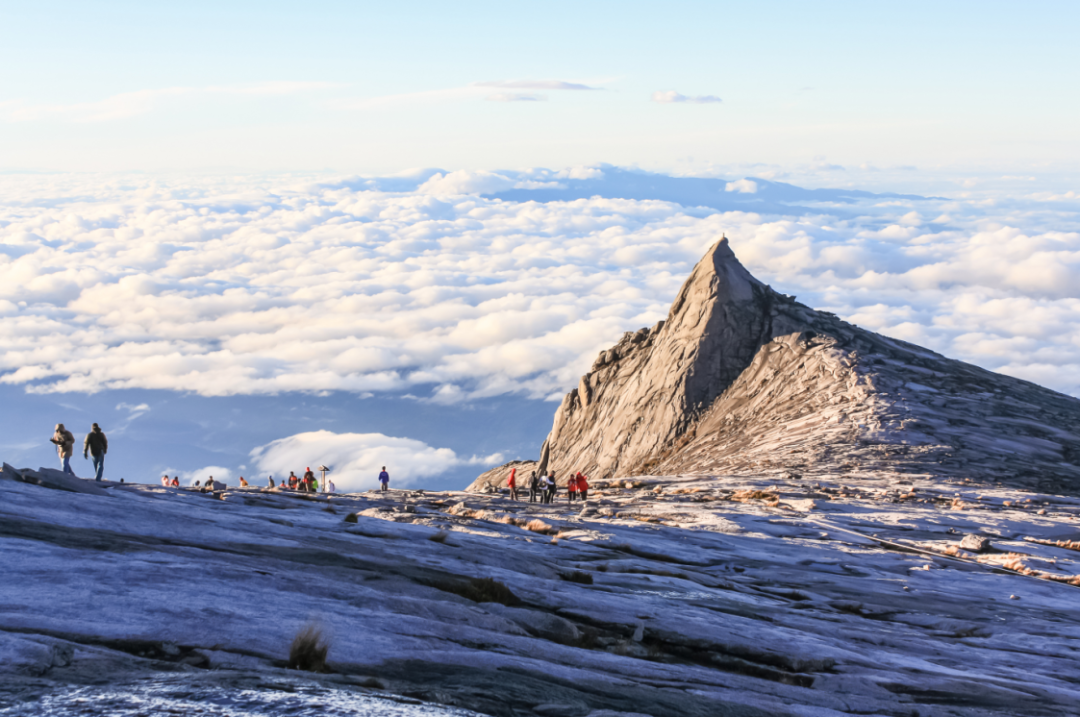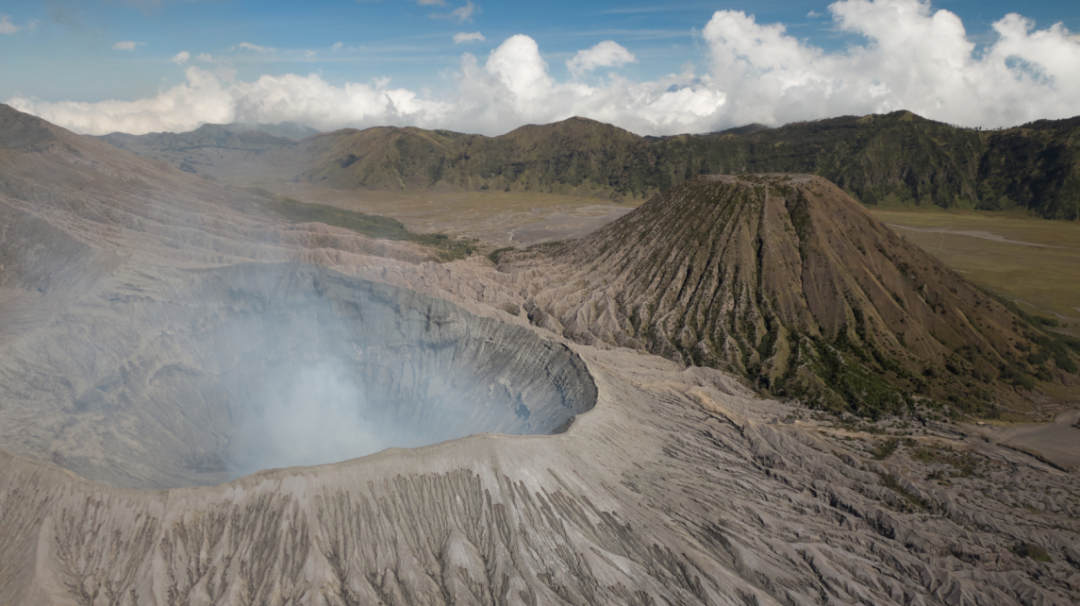The 2024 International Conference of Mountain Tourism and Outdoor Sports kicked off in Xingyi City, Guizhou Province on September 26th. Guests from all sectors of culture, sports and tourism both at home and abroad gathered together to enjoy the charm of mountain tourism, the passion of mountain sports, and the richness of mountain culture. The conference held a series of international wonderful activities around the theme of "Integration of Culture, Sports and Tourism Presents a High - Quality Life". Through the exchange and sharing of participants, explore the innovative development path of high-quality and sustainable mountain tourism and outdoor sports in the context of the new era, and inject new vitality into mountain tourism. At the Opening Ceremony of the Conference, Peter Semone, Chairman of Pacific Asia Travel Association (PATA), delivered a speech.

Highlights:
● I am delighted that IMTA and PATA have entered into a research partnership that is being developed between to better understand the opportunities and threats associated with developing tourism in mountain areas in the Asia and Pacific region.
●It is undeniable that in searching for new experiences, mountain areas are coming under the gaze of travellers, for a number of reasons. At a very esoteric level, mountains are awe-inspiring with their majesty and unpredictable moods, while at a physical level their very presence affects local weather patterns, rainfall, fertility and even moods.
● In some cultures, mountains form such an integral part of daily life of residents that they are afforded both sentience and identity.
●At the more mundane level, travellers, especially domestic travellers are beginning to discover that their own mountain destinations house a wide array of experiences and activities that can be accessed more frequently and more easily than many international ones.
● Mountains can also offer a wide range of seasonal experiences ranging from hiking in the summer to snow and ice activities during the winter months, with variations of both in-between.
● The very presence of human activity in and across mountain areas affects to some degree, the structure and integrity of those areas and with the very fragile nature of some of those ecosystems, they can be lost without us even being aware of those losses.
● Development comes at a cost and our role is to define and maintain the delicate balance it plays with the social and physical environment.
● Access to hard reliable data for objective decision-making on mountain tourism development but with a local perspective on the impacts of tourism.
The following is the full text:
Excellencies, leaders of government, tourism sector stalwarts and distinguished delegates, good morning. On behalf of the member organizations of Pacific Asia Travel Association (PATA) across the globe, I would like to thank the International Mountain Tourism Alliance (IMTA) for the invitation to participate in the International Conference of Mountain Tourism and Outdoor Sports 2024 and IMTA Annual Conference here in beautiful Xingyi City, Guizhou Province.
I am delighted that IMTA and PATA have entered into a research partnership that is being developed between to better understand the opportunities and threats associated with developing tourism in mountain areas in the Asia and Pacific region. PATA and IMTA have been working closely together since IMTA was established in 2017 when the two organizations signed a memorandum of understanding.

Doi Ang Khang, Thailand
Asia and the Pacific are surrounded by the Ring of Fire and the Himalaya mountain ranges. It is undeniable that in searching for new experiences, mountain areas are coming under the gaze of travellers, for a number of reasons. At a very esoteric level, mountains are awe-inspiring with their majesty and unpredictable moods, while at a physical level their very presence affects local weather patterns, rainfall, fertility and even moods. In some cultures, mountains form such an integral part of daily life of residents that they are afforded both sentience and identity.
I am reminded of my recent travels in Tibet, Bhutan and Nepal where the scenic beauty and mystical Buddhist culture combine to form a life changing experience.

Mount Everest, China
At the more mundane level, travellers, especially domestic travellers are beginning to discover that their own mountain destinations house a wide array of experiences and activities that can be accessed more frequently and more easily than many international ones. Further, many of these domestic experiences, driven by demand, are rapidly developing into world-class venues.
Mountains can also offer a wide range of seasonal experiences ranging from hiking in the summer to snow and ice activities during the winter months, with variations of both in-between. In today’s climate confused world, mountains can also offer an escape to more tolerable and less polluted climates as the world deals with extremes elsewhere.

Mount Kinabalu, Sabah, Malaysia
While this is all positive on one side, there is also an inherent danger in developing mountain areas without strict management protocols as it is all too easy to destroy the very assets we love, with unrestrained exposure. And do not be complacent about this: the very presence of human activity in and across mountain areas affects to some degree, the structure and integrity of those areas and with the very fragile nature of some of those ecosystems, they can be lost without us even being aware of those losses.
Development comes at a cost and our role is to define and maintain the delicate balance it plays with the social and physical environment. But that requires hard, tangible data and it is here that some significant deficiencies become apparent. A recent report from UNWTO (now UN Tourism) and the FAO points out that “the scarcity of domestic mountain tourism-related data make it difficult or even impossible to assess the economic, social and environmental impacts of this important segment”.

Mount Bromo, Indonesia
More importantly perhaps is the fact that global generalizations relating to mountain tourism can easily mask some of the more subtle but no less important issues at a more local level. This is what we aim to achieve with this working relationship: access to hard reliable data for objective decision-making on mountain tourism development but with a local perspective on the impacts of tourism. In this way, the sector can be managed to grow responsibly and sustainability and with an equitable distribution of benefits. That is our objective and we look forward to working with you all to make this a reality.
September 27th is world tourism day. This year’s theme is Peace and Tourism is appropriate considering the geopolitical unrest happening in many corners of the globe, particularly in the Middle East and Ukraine. As we all know, tourism and war are incompatible.

Anji Sea Grand Canyon, Xinjiang, China
PATA was founded on the connection between travel and peace and has long been an advocate for building peace through the people to people exchange fostered by tourism. In 1951, PATA’s founders - recognized that “having achieved peace (after World War 2), we can make, in this great Pacific, on its islands and its shores, and among its people of widely differing cultures, a place of attraction for all people of good will”. For the past 73 years PATA has helped develop tourism across Asia and the Pacific, and today is committed to building inbound tourism to the People’s Republic of China.
On behalf of the PATA members, I would like to thank IMTA for the opportunity to participate in and contribute to this event. We look forward to continued collaboration and friendship.
Text and images source: IMTA
Editor Ⅰ: Zhang Wenwen
Editor Ⅱ: Wu Dan
Editor Ⅲ: Liu Guosong














